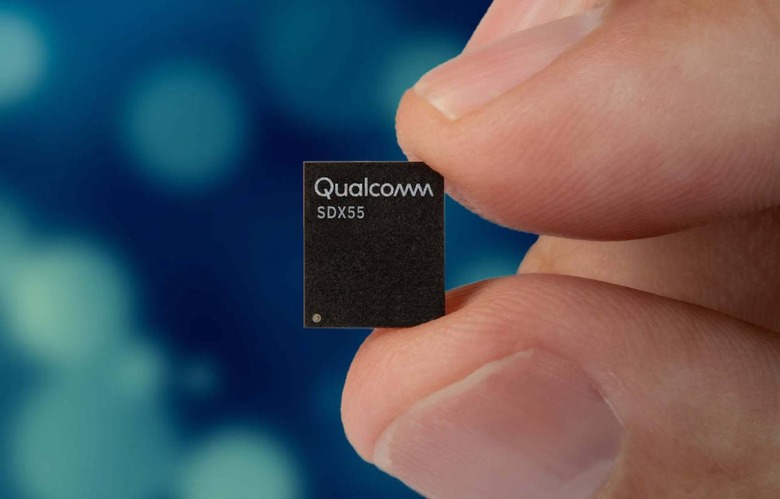Qualcomm Just Revealed The 5G Chip To Supercharge 2020
Qualcomm isn't done with 5G at Mobile World Congress, and so alongside 5G phones and 5G foldables there's also its first Snapdragon Mobile Platform with 5G integrated. The new Snapdragon SoC will combine both an application processor and a 5G multimode modem into a single unit, complete with particular focus on power management.
The latter will be handled by Qualcomm's 5G PowerSave system. Already used in the Snapdragon X50 and X55 5G modems, that combines features like connected-mode discontinuous reception (C-DRX), which can put a device to sleep when there's no cellular activity, then wake it up again when it's needed.
Indeed, according to Qualcomm, its various power-saving features for 5G can enable devices that match 4G LTE for battery consumption. Considering one of the big concerns about 5G has been how power-hungry the first generation of phones might be – and thus how bulky they'll end up, given the size of the battery required – that's good news.
Platform versus Piecemeal
The new mobile platform with integrated 5G isn't Qualcomm's first 5G product, of course. In fact the company already has two 5G modems announced: the Snapdragon X50 that will show up in phones like the Samsung Galaxy S10 5G and the LG V50 ThinQ 5G, and the Snapdragon X55 announced this year. X55-based devices are on track to launch before the end of 2019, Qualcomm promises.
You'd be forgiven, then, for questioning why this new mobile platform is so important. The answer, as is so often the case in the tech world, is efficiency.

At the moment, if you're a phone-maker that wants Qualcomm 5G in your device, you have to combine at least two different Snapdragon products. First, you need an application processor – specifically, you need the Snapdragon 855 – and then you need the 5G modem, as the application processor supports cellular standards up to 4G LTE, but not 5G. That's why devices like the Galaxy S10 5G include not only the Snapdragon 855 but the Snapdragon X50 5G modem, too.
Come the arrival of the Snapdragon X55 5G modem, things will get more flexible, if no less complex. That will have broader Snapdragon application processor compatibility than its predecessor: you won't need to pair it with the Snapdragon 855 specifically. However, device-makers will still need two components.

A small, more power-efficient package
Qualcomm's first Snapdragon with both the application processor and the 5G modem on a single SoC will address that lingering issue. It'll likely mean more efficient use of space inside a device – potentially meaning more room for batteries, or just for making the phone smaller overall – as well as be more efficient in terms of power consumption.
We'll still have to wait a while to see the first devices based on the new mobile platform. Qualcomm says it will begin sampling the SoC to its customers before the end of June 2019, but actual phones and other products using it won't arrive until the first half of 2020. At that point, Qualcomm will potentially have three 5G platforms co-existing, this new one, and devices based on both the X50 and the X55.
